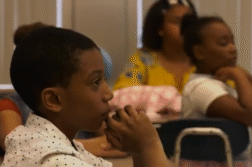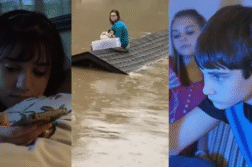ORLANDO, Fla. (Ivanhoe Newswire) — Todo joven a oido un rumor sobre algun compañero de escuela. Hoy un nuevo estudio examina los tipos de habladurias que corren por los colegios y quienes suelen ser el blanco de ellas.
Chismes y rumores … son problemas antiguos que todos los niños y adolescentes tienen que confrontar en algun momento. Hoy los expertos quieren entender mejor las habladurias en la escuela intermedia. Durante un estudio siguieron a mas de 300 estudiantes desde el quinto al septimo grado. Cada año los niños llenaron un cuestionario y fueron entrevistados sobre la clase de rumores que circulaban por el colegio.
Comprobaron que los estudiantes populares solian ser el blanco de los chismes. En el septimo grado las niñas eran las victimas de rumores sobre su actividad sexual mientras que los varones eran el blanco de chismes sobre su orientacion sexual. Los rumores sobre la actividad sexual, que tenian mas impacto social por que los niños los diseminaban, se producian mas en el septimo grado que en grados anteriores. Los expertos enfatizan la necesidad de hablar con nuestros hijos sobre el daño que pueden causar las habladurias, y no asumir que por que un estudiante es popular no tiene problemas.
Otros estudios han comprobado que ser el blanco de chismes esta asociado con baja autoestima, soledad, depresion y ansiedad.
Los contribuyentes a este reportaje incluyen: Cyndy McGrath, Supervisora Productora; Julie Marks, Productora de Campo; Roque Correa, Editor.
Producido por Child Trends News Service en asocio con Ivanhoe Broadcast News y auspiciado por una beca de la National Science Foundation.



